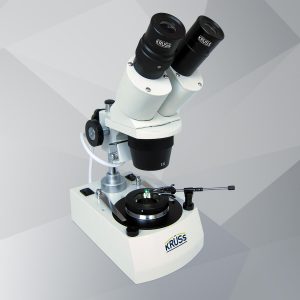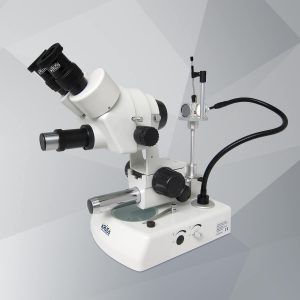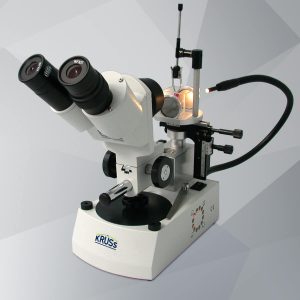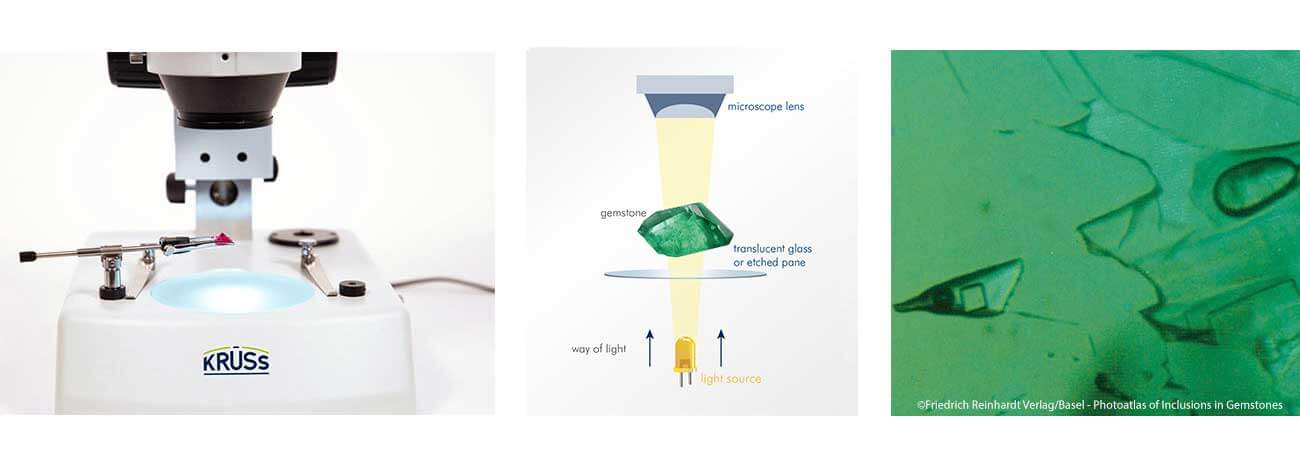In gemology, all optically recognizable irregularities inside the gemstones – such as material foreign bodies (minerals, liquids, gases), cracks, color zones or twin lamellas – are understood as inclusions. Often they cannot be seen with the naked eye, but only with the help of a gemstone microscope. The type and form of the inclusions are often a good indication of which gemstones are involved and from which sources they originate.
You need these products
-
Gem microscope
508,13 €Microscope with incident and transmitted light, dark-field illumination (dark-field condenser), ideal for viewing the outlines of low-contrast inclusions
incl. VAT
+ Shipping costs
Add to cart -
Immersion microscope zoom
2.734,62 €Powerful stereo microscope with a large zoom range and large working distance, enabling observations with a high depth of field
incl. VAT
+ Shipping costs
Add to cart -
Immersion microscope
1.769,53 €Horizontal microscope for examinations in immersion liquids, in demand when disturbing reflections on surfaces or stone facets are to be avoided
incl. VAT
+ Shipping costs
Add to cart

Location determination through inclusions
The emerald is extremely rare and therefore one of the most valuable gemstones in the world. That is why extraordinary prices are charged for him. Inclusions do not decrease the value of emeralds. On the contrary: collectors are looking for these stones. They are considered the fingerprints of nature, the technical term is “Jardin”. There is also Emerald-Inclusions to beware of. Certain inclusions that come to the surface of the gemstone reveal future cracks or fractures. Professionals can distinguish these inclusions with the gem microscope.
Sometimes their origin is also decisive for the value of these stones. The most important emerald deposits are in Colombia and Brazil. African occurrences are also significant, for example in Zimbabwe, Zambia, Madagascar and Tanzania. A microscopic look inside can often reveal where the emeralds were found. Why? The inclusion image of a stone is, similar to the human fingerprint, an individual recognition feature. Here’s an example:
With the microscope an emerald is examined with bright field microscopy. The appearance of three-phase inclusions in the emerald is not only proof that it is a natural emerald, but they also reveal the place of origin. It is an emerald from Colombia.
There are many other possible interpretations for the observation of internal inclusions. We have compiled a large selection of relevant specialist information with many interesting detailed photos on gem microscopy in the free whitepaper “Gemstone microscopes”. This specialist publication was produced in collaboration with Prof. Dr. Jochen Schlueter wrote. He is a graduate mineralogist and responsible for the display collection of the Mineralogical Museum in Hamburg.
Do you want to read more?
Here you can order the whitepaper “Gemstone Microscopes” free of charge, in which many microscopic examinations and types of lighting are described. Simply enter your contact details here and we will send you our detailed white paper as a PDF on the subject of “Gemstone Microscopes” by email.




